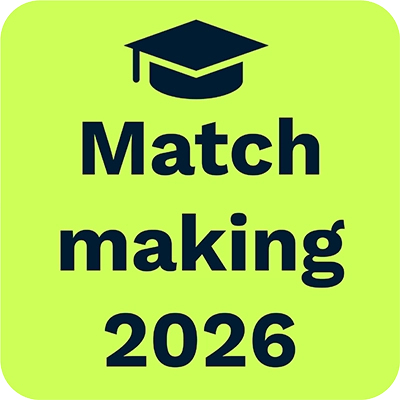Research Group Eyke Hüllermeier
Eyke Hüllermeier
heads the Chair of Artificial Intelligence and Machine Learning at LMU Munich.
His research interests are centered around methods and theoretical foundations of artificial intelligence, with a specific focus on machine learning and reasoning under uncertainty. He has published more than 300 articles on these topics in top-tier journals and major international conferences, and several of his contributions have been recognized with scientific awards.
Team members @MCML
PostDocs
PhD Students
Recent News @MCML
Publications @MCML
2026
[113]
V. Margraf • J. Hanselle • J. Rodemann • M. Wever • S. Vollmer • E. Hüllermeier
Imprecise Acquisitions in Bayesian Optimization.
EIML @EurIPS 2025 - Workshop on Epistemic Intelligence in Machine Learning at the European Conference on Information Processing Systems. Copenhagen, Denmark, Dec 03-05, 2025. PDF
Imprecise Acquisitions in Bayesian Optimization.
EIML @EurIPS 2025 - Workshop on Epistemic Intelligence in Machine Learning at the European Conference on Information Processing Systems. Copenhagen, Denmark, Dec 03-05, 2025. PDF
2025
[112]

T. Löhr • P. Hofman • F. Mohr • E. Hüllermeier
Credal Prediction based on Relative Likelihood.
NeurIPS 2025 - 39th Conference on Neural Information Processing Systems. San Diego, CA, USA, Nov 30-Dec 07, 2025. Spotlight Presentation. To be published. Preprint available. URL
Credal Prediction based on Relative Likelihood.
NeurIPS 2025 - 39th Conference on Neural Information Processing Systems. San Diego, CA, USA, Nov 30-Dec 07, 2025. Spotlight Presentation. To be published. Preprint available. URL
[111]

T. Kaufmann • Y. Metz • D. A. Keim • E. Hüllermeier
ResponseRank: Data-Efficient Reward Modeling through Preference Strength Learning.
NeurIPS 2025 - 39th Conference on Neural Information Processing Systems. San Diego, CA, USA, Nov 30-Dec 07, 2025. To be published. URL
ResponseRank: Data-Efficient Reward Modeling through Preference Strength Learning.
NeurIPS 2025 - 39th Conference on Neural Information Processing Systems. San Diego, CA, USA, Nov 30-Dec 07, 2025. To be published. URL
[110]

H. Baniecki • M. Muschalik • F. Fumagalli • B. Hammer • E. Hüllermeier • P. Biecek
Explaining Similarity in Vision-Language Encoders with Weighted Banzhaf Interactions.
NeurIPS 2025 - 39th Conference on Neural Information Processing Systems. San Diego, CA, USA, Nov 30-Dec 07, 2025. To be published. Preprint available. URL
Explaining Similarity in Vision-Language Encoders with Weighted Banzhaf Interactions.
NeurIPS 2025 - 39th Conference on Neural Information Processing Systems. San Diego, CA, USA, Nov 30-Dec 07, 2025. To be published. Preprint available. URL
[109]

C. Damke • E. Hüllermeier
Adjusted Count Quantification Learning on Graphs.
NeurIPS 2025 - 39th Conference on Neural Information Processing Systems. San Diego, CA, USA, Nov 30-Dec 07, 2025. To be published. Preprint available. URL
Adjusted Count Quantification Learning on Graphs.
NeurIPS 2025 - 39th Conference on Neural Information Processing Systems. San Diego, CA, USA, Nov 30-Dec 07, 2025. To be published. Preprint available. URL
[108]
M. Sengupta • M. Muschalik • F. Fumagalli • B. Hammer • E. Hüllermeier • D. Ghosh • H. Wachsmut
Investigating the Impact of Conceptual Metaphors on LLM-based NLI through Shapley Interactions.
Findings @EMNLP 2025 - Findings of the Conference on Empirical Methods in Natural Language Processing. Suzhou, China, Nov 04-09, 2025. DOI
Investigating the Impact of Conceptual Metaphors on LLM-based NLI through Shapley Interactions.
Findings @EMNLP 2025 - Findings of the Conference on Empirical Methods in Natural Language Processing. Suzhou, China, Nov 04-09, 2025. DOI
[107]
P. Kolpaczki
Approximating the shapley value and shapley interactions.
Dissertation LMU München. Oct. 2025. DOI
Approximating the shapley value and shapley interactions.
Dissertation LMU München. Oct. 2025. DOI
[106]
C. Bülte • Y. Sale • G. Kutyniok • E. Hüllermeier
Uncertainty Quantification for Regression: A Unified Framework based on kernel scores.
Preprint (Oct. 2025). arXiv
Uncertainty Quantification for Regression: A Unified Framework based on kernel scores.
Preprint (Oct. 2025). arXiv
[105]
A. Findeis • T. Kaufmann • E. Hüllermeier • R. Mullins
Feedback Forensics: A Toolkit to Measure AI Personality.
Preprint (Oct. 2025). arXiv GitHub
Feedback Forensics: A Toolkit to Measure AI Personality.
Preprint (Oct. 2025). arXiv GitHub
[104]

C. Damke • E. Hüllermeier
Distribution Matching for Graph Quantification Under Structural Covariate Shift.
ECML-PKDD 2025 - European Conference on Machine Learning and Principles and Practice of Knowledge Discovery in Databases. Porto, Portugal, Sep 15-19, 2025. DOI
Distribution Matching for Graph Quantification Under Structural Covariate Shift.
ECML-PKDD 2025 - European Conference on Machine Learning and Principles and Practice of Knowledge Discovery in Databases. Porto, Portugal, Sep 15-19, 2025. DOI
[103]

J. Rodemann • F. Croppi • P. Arens • Y. Sale • J. Herbinger • B. Bischl • E. Hüllermeier • T. Augustin • C. J. Walsh • G. Casalicchio
Explaining Bayesian Optimization by Shapley Values Facilitates Human-AI Collaboration For Exosuit Personalization.
ECML-PKDD 2025 - European Conference on Machine Learning and Principles and Practice of Knowledge Discovery in Databases. Porto, Portugal, Sep 15-19, 2025. DOI GitHub
Explaining Bayesian Optimization by Shapley Values Facilitates Human-AI Collaboration For Exosuit Personalization.
ECML-PKDD 2025 - European Conference on Machine Learning and Principles and Practice of Knowledge Discovery in Databases. Porto, Portugal, Sep 15-19, 2025. DOI GitHub
[102]
Y. Sale • A. Javanmardi • E. Hüllermeier
Aleatoric and Epistemic Uncertainty in Conformal Prediction.
COPA 2025 - 14th Symposium on Conformal and Probabilistic Prediction with Applications. Egham, UK, Sep 10-12, 2025. URL
Aleatoric and Epistemic Uncertainty in Conformal Prediction.
COPA 2025 - 14th Symposium on Conformal and Probabilistic Prediction with Applications. Egham, UK, Sep 10-12, 2025. URL
[101]

S. Dutta • T. Kaufmann • G. Glavaš • I. Habernal • K. Kersting • F. Kreuter • M. Mezini • I. Gurevych • E. Hüllermeier • H. Schütze
Problem Solving Through Human-AI Preference-Based Cooperation.
Computational Linguistics. Sep. 2025. DOI
Problem Solving Through Human-AI Preference-Based Cooperation.
Computational Linguistics. Sep. 2025. DOI
[100]
S. Haas • E. Hüllermeier
Conformalized prescriptive machine learning for uncertainty-aware automated decision making: the case of goodwill requests.
International Journal of Data Science and Analytics 20.3. Sep. 2025. DOI
Conformalized prescriptive machine learning for uncertainty-aware automated decision making: the case of goodwill requests.
International Journal of Data Science and Analytics 20.3. Sep. 2025. DOI
[99]
N. Walha • S. G. Gruber • T. Decker • Y. Yang • A. Javanmardi • E. Hüllermeier • F. Buettner
Fine-Grained Uncertainty Decomposition in Large Language Models: A Spectral Approach.
Preprint (Sep. 2025). arXiv
Fine-Grained Uncertainty Decomposition in Large Language Models: A Spectral Approach.
Preprint (Sep. 2025). arXiv
[98]

J. Hanselle • A. Javanmardi • T. Oberkofler • Y. Sale • E. Hüllermeier
Conformal Prediction without Nonconformity Scores.
UAI 2025 - 41st Conference on Uncertainty in Artificial Intelligence. Rio de Janeiro, Brazil, Jul 21-25, 2025. URL
Conformal Prediction without Nonconformity Scores.
UAI 2025 - 41st Conference on Uncertainty in Artificial Intelligence. Rio de Janeiro, Brazil, Jul 21-25, 2025. URL
[97]

X. Feng • Z. Jiang • T. Kaufmann • E. Hüllermeier • P. Weng • Y. Zhu
Comparing Comparisons: Informative and Easy Human Feedback with Distinguishability Queries.
ICML 2025 - 42nd International Conference on Machine Learning. Vancouver, Canada, Jul 13-19, 2025. URL
Comparing Comparisons: Informative and Easy Human Feedback with Distinguishability Queries.
ICML 2025 - 42nd International Conference on Machine Learning. Vancouver, Canada, Jul 13-19, 2025. URL
[96]
S. Heid • J. Kornowicz • J. Hanselle • K. Thommes • E. Hüllermeier
MSL: Multi-class Scoring Lists for Interpretable Incremental Decision-Making.
xAI 2025 - 3rd World Conference on Explainable Artificial Intelligence. Istanbul, Turkey, Jul 09-11, 2025. DOI
MSL: Multi-class Scoring Lists for Interpretable Incremental Decision-Making.
xAI 2025 - 3rd World Conference on Explainable Artificial Intelligence. Istanbul, Turkey, Jul 09-11, 2025. DOI
[95]
P. Kolpaczki • T. Nielen • E. Hüllermeier
Antithetic Sampling for Top-k Shapley Identification.
xAI 2025 - 3rd World Conference on Explainable Artificial Intelligence. Istanbul, Turkey, Jul 09-11, 2025. DOI
Antithetic Sampling for Top-k Shapley Identification.
xAI 2025 - 3rd World Conference on Explainable Artificial Intelligence. Istanbul, Turkey, Jul 09-11, 2025. DOI
[94]
Y. Sale • A. Ramdas
Online Selective Conformal Prediction: Errors and Solutions.
Transactions on Machine Learning Research. Jul. 2025. URL
Online Selective Conformal Prediction: Errors and Solutions.
Transactions on Machine Learning Research. Jul. 2025. URL
[93]
S. Haas • E. Hüllermeier
Aleatoric and Epistemic Uncertainty Measures for Ordinal Classification through Binary Reduction.
Preprint (Jul. 2025). arXiv
Aleatoric and Epistemic Uncertainty Measures for Ordinal Classification through Binary Reduction.
Preprint (Jul. 2025). arXiv
[92]
V. Margraf • T. Koerner • A. Tornede • M. Wever
RunAndSchedule2Survive: Algorithm Scheduling Based on Run2Survive.
ACM Transactions on Evolutionary Learning and Optimization Just accepted. Jun. 2025. DOI
RunAndSchedule2Survive: Algorithm Scheduling Based on Run2Survive.
ACM Transactions on Evolutionary Learning and Optimization Just accepted. Jun. 2025. DOI
[91]

P. Gupta • M. Wever • E. Hüllermeier
Information Leakage Detection through Approximate Bayes-optimal Prediction.
Information Sciences In Press, Journal Pre-proof.122419. Jun. 2025. DOI
Information Leakage Detection through Approximate Bayes-optimal Prediction.
Information Sciences In Press, Journal Pre-proof.122419. Jun. 2025. DOI
[90]
T. Kaufmann • P. Weng • V. Bengs • E. Hüllermeier
A Survey of Reinforcement Learning from Human Feedback.
Transactions on Machine Learning Research. Jun. 2025. URL
A Survey of Reinforcement Learning from Human Feedback.
Transactions on Machine Learning Research. Jun. 2025. URL
[89]
P. Hofman • Y. Sale • E. Hüllermeier
Uncertainty Quantification with Proper Scoring Rules: Adjusting Measures to Prediction Tasks.
Preprint (May. 2025). arXiv
Uncertainty Quantification with Proper Scoring Rules: Adjusting Measures to Prediction Tasks.
Preprint (May. 2025). arXiv
[88]
A. Javanmardi • S. H. Zargarbashi • S. M. A. R. Thies • W. Waegeman • A. Bojchevski • E. Hüllermeier
Optimal Conformal Prediction under Epistemic Uncertainty.
Preprint (May. 2025). arXiv
Optimal Conformal Prediction under Epistemic Uncertainty.
Preprint (May. 2025). arXiv
[87]
J. Wang • P. Gupta • I. Habernal • E. Hüllermeier
Is Your Prompt Safe? Investigating Prompt Injection Attacks Against Open-Source LLMs.
Preprint (May. 2025). arXiv
Is Your Prompt Safe? Investigating Prompt Injection Attacks Against Open-Source LLMs.
Preprint (May. 2025). arXiv
[86]

M. Spliethöver • T. Knebler • F. Fumagalli • M. Muschalik • B. Hammer • E. Hüllermeier • H. Wachsmuth
Adaptive Prompting: Ad-hoc Prompt Composition for Social Bias Detection.
NAACL 2025 - Annual Conference of the North American Chapter of the Association for Computational Linguistics. Albuquerque, NM, USA, Apr 29-May 04, 2025. DOI
Adaptive Prompting: Ad-hoc Prompt Composition for Social Bias Detection.
NAACL 2025 - Annual Conference of the North American Chapter of the Association for Computational Linguistics. Albuquerque, NM, USA, Apr 29-May 04, 2025. DOI
[85]

A. Findeis • T. Kaufmann • E. Hüllermeier • S. Albanie • R. D. Mullins
Inverse Constitutional AI: Compressing Preferences into Principles.
ICLR 2025 - 13th International Conference on Learning Representations. Singapore, Apr 24-28, 2025. URL GitHub
Inverse Constitutional AI: Compressing Preferences into Principles.
ICLR 2025 - 13th International Conference on Learning Representations. Singapore, Apr 24-28, 2025. URL GitHub
[84]

M. Muschalik • F. Fumagalli • P. Frazzetto • J. Strotherm • L. Hermes • A. Sperduti • E. Hüllermeier • B. Hammer
Exact Computation of Any-Order Shapley Interactions for Graph Neural Networks.
ICLR 2025 - 13th International Conference on Learning Representations. Singapore, Apr 24-28, 2025. URL
Exact Computation of Any-Order Shapley Interactions for Graph Neural Networks.
ICLR 2025 - 13th International Conference on Learning Representations. Singapore, Apr 24-28, 2025. URL
[83]
R. Visser • F. Fumagalli • M. Muschalik • E. Hüllermeier • B. Hammer
Explaining Outliers using Isolation Forest and Shapley Interactions.
ESANN 2025 - European Symposium on Artificial Neural Networks, Computational Intelligence and Machine Learning. Bruges, Belgium, Apr 23-25, 2025. PDF
Explaining Outliers using Isolation Forest and Shapley Interactions.
ESANN 2025 - European Symposium on Artificial Neural Networks, Computational Intelligence and Machine Learning. Bruges, Belgium, Apr 23-25, 2025. PDF
[82]
C. Bülte • Y. Sale • T. Löhr • P. Hofman • G. Kutyniok • E. Hüllermeier
An Axiomatic Assessment of Entropy- and Variance-based Uncertainty Quantification in Regression.
Preprint (Apr. 2025). arXiv
An Axiomatic Assessment of Entropy- and Variance-based Uncertainty Quantification in Regression.
Preprint (Apr. 2025). arXiv
[81]
L. Fichtel • M. Spliethöver • E. Hüllermeier • P. Jimenez • N. Klowait • S. Kopp • A.-C. N. Ngomo • A. Robrecht • I. Scharlau • L. Terfloth • A.-L. Vollmer • H. Wachsmuth
Investigating Co-Constructive Behavior of Large Language Models in Explanation Dialogues.
Preprint (Apr. 2025). arXiv
Investigating Co-Constructive Behavior of Large Language Models in Explanation Dialogues.
Preprint (Apr. 2025). arXiv
[80]
N. Röhrich • A. Hoffmann • R. Nordsieck • E. Zarbali • A. Javanmardi
Masked Autoencoder Self Pre-Training for Defect Detection in Microelectronics.
Preprint (Apr. 2025). arXiv
Masked Autoencoder Self Pre-Training for Defect Detection in Microelectronics.
Preprint (Apr. 2025). arXiv
[79]

X. Feng • Z. Jiang • T. Kaufmann • P. Xu • E. Hüllermeier • P. Weng • Y. Zhu
DUO: Diverse, Uncertain, On-Policy Query Generation and Selection for Reinforcement Learning from Human Feedback.
AAAI 2025 - 39th Conference on Artificial Intelligence. Philadelphia, PA, USA, Feb 25-Mar 04, 2025. DOI
DUO: Diverse, Uncertain, On-Policy Query Generation and Selection for Reinforcement Learning from Human Feedback.
AAAI 2025 - 39th Conference on Artificial Intelligence. Philadelphia, PA, USA, Feb 25-Mar 04, 2025. DOI
[78]

J. Hanselle • S. Heid • J. Fürnkranz • E. Hüllermeier
Probabilistic scoring lists for interpretable machine learning.
Machine Learning 114.55. Feb. 2025. DOI
Probabilistic scoring lists for interpretable machine learning.
Machine Learning 114.55. Feb. 2025. DOI
[77]
M. Jürgens • T. Mortier • E. Hüllermeier • V. Bengs • W. Waegeman
A calibration test for evaluating set-based epistemic uncertainty representations.
Preprint (Feb. 2025). arXiv
A calibration test for evaluating set-based epistemic uncertainty representations.
Preprint (Feb. 2025). arXiv
[76]
G. D. Pelegrina • P. Kolpaczki • E. Hüllermeier
Shapley Value Approximation Based on k-Additive Games.
Preprint (Feb. 2025). arXiv
Shapley Value Approximation Based on k-Additive Games.
Preprint (Feb. 2025). arXiv
[75]
T. Mortier • A. Javanmardi • Y. Sale • E. Hüllermeier • W. Waegeman
Conformal Prediction in Hierarchical Classification.
Preprint (Jan. 2025). arXiv
Conformal Prediction in Hierarchical Classification.
Preprint (Jan. 2025). arXiv
[74]
2024
[73]

A. Javanmardi • D. Stutz • E. Hüllermeier
Conformalized Credal Set Predictors.
NeurIPS 2024 - 38th Conference on Neural Information Processing Systems. Vancouver, Canada, Dec 10-15, 2024. URL
Conformalized Credal Set Predictors.
NeurIPS 2024 - 38th Conference on Neural Information Processing Systems. Vancouver, Canada, Dec 10-15, 2024. URL
[72]

M. Muschalik • H. Baniecki • F. Fumagalli • P. Kolpaczki • B. Hammer • E. Hüllermeier
shapiq: Shapley Interactions for Machine Learning.
NeurIPS 2024 - 38th Conference on Neural Information Processing Systems. Vancouver, Canada, Dec 10-15, 2024. URL GitHub
shapiq: Shapley Interactions for Machine Learning.
NeurIPS 2024 - 38th Conference on Neural Information Processing Systems. Vancouver, Canada, Dec 10-15, 2024. URL GitHub
[71]

N. Saberi • M. H. Shaker • C. R. Duguay • K. A. Scott • E. Hüllermeier
Uncertainty Estimation of Lake Ice Cover Maps From a Random Forest Classifier Using MODIS TOA Reflectance Data.
IEEE Journal of Selected Topics in Applied Earth Observations and Remote Sensing 18. Dec. 2024. DOI
Uncertainty Estimation of Lake Ice Cover Maps From a Random Forest Classifier Using MODIS TOA Reflectance Data.
IEEE Journal of Selected Topics in Applied Earth Observations and Remote Sensing 18. Dec. 2024. DOI
[70]
F. Fumagalli • M. Muschalik • E. Hüllermeier • B. Hammer • J. Herbinger
Unifying Feature-Based Explanations with Functional ANOVA and Cooperative Game Theory.
Preprint (Dec. 2024). arXiv
Unifying Feature-Based Explanations with Functional ANOVA and Cooperative Game Theory.
Preprint (Dec. 2024). arXiv
[69]
S. M. A. R. Thies • J. C. Alfaro • V. Bengs
MORE–PLR: Multi-Output Regression Employed for Partial Label Ranking.
DS 2024 - 27th International Conference on Discovery Science. Pisa, Italy, Oct 14-16, 2024. DOI GitHub
MORE–PLR: Multi-Output Regression Employed for Partial Label Ranking.
DS 2024 - 27th International Conference on Discovery Science. Pisa, Italy, Oct 14-16, 2024. DOI GitHub
[68]
S. Haas • K. Hegestweiler • M. Rapp • M. Muschalik • E. Hüllermeier
Stakeholder-centric explanations for black-box decisions: an XAI process model and its application to automotive goodwill assessments.
Frontiers in Artificial Intelligence 7. Oct. 2024. DOI
Stakeholder-centric explanations for black-box decisions: an XAI process model and its application to automotive goodwill assessments.
Frontiers in Artificial Intelligence 7. Oct. 2024. DOI
[67]

C. Damke • E. Hüllermeier
CUQ-GNN: Committee-Based Graph Uncertainty Quantification Using Posterior Networks.
ECML-PKDD 2024 - European Conference on Machine Learning and Principles and Practice of Knowledge Discovery in Databases. Vilnius, Lithuania, Sep 09-13, 2024. DOI
CUQ-GNN: Committee-Based Graph Uncertainty Quantification Using Posterior Networks.
ECML-PKDD 2024 - European Conference on Machine Learning and Principles and Practice of Knowledge Discovery in Databases. Vilnius, Lithuania, Sep 09-13, 2024. DOI
[66]

R. Fischer • M. Wever • S. Buschjäger • T. Liebig
MetaQuRe: Meta-learning from Model Quality and Resource Consumption.
ECML-PKDD 2024 - European Conference on Machine Learning and Principles and Practice of Knowledge Discovery in Databases. Vilnius, Lithuania, Sep 09-13, 2024. DOI
MetaQuRe: Meta-learning from Model Quality and Resource Consumption.
ECML-PKDD 2024 - European Conference on Machine Learning and Principles and Practice of Knowledge Discovery in Databases. Vilnius, Lithuania, Sep 09-13, 2024. DOI
[65]

A. Vahidi • L. Wimmer • H. A. Gündüz • B. Bischl • E. Hüllermeier • M. Rezaei
Diversified Ensemble of Independent Sub-Networks for Robust Self-Supervised Representation Learning.
ECML-PKDD 2024 - European Conference on Machine Learning and Principles and Practice of Knowledge Discovery in Databases. Vilnius, Lithuania, Sep 09-13, 2024. DOI
Diversified Ensemble of Independent Sub-Networks for Robust Self-Supervised Representation Learning.
ECML-PKDD 2024 - European Conference on Machine Learning and Principles and Practice of Knowledge Discovery in Databases. Vilnius, Lithuania, Sep 09-13, 2024. DOI
[64]
M. Muschalik • F. Fumagalli • B. Hammer • E. Hüllermeier
Explaining Change in Models and Data with Global Feature Importance and Effects.
TempXAI @ECML-PKDD 2024 - Tutorial-Workshop Explainable AI for Time Series and Data Streams at European Conference on Machine Learning and Principles and Practice of Knowledge Discovery in Databases. Vilnius, Lithuania, Sep 09-13, 2024. PDF
Explaining Change in Models and Data with Global Feature Importance and Effects.
TempXAI @ECML-PKDD 2024 - Tutorial-Workshop Explainable AI for Time Series and Data Streams at European Conference on Machine Learning and Principles and Practice of Knowledge Discovery in Databases. Vilnius, Lithuania, Sep 09-13, 2024. PDF
[63]
P. Kolpaczki • E. Hüllermeier • V. Bengs
Piecewise-Stationary Dueling Bandits.
Transactions on Machine Learning Research. Sep. 2024. URL
Piecewise-Stationary Dueling Bandits.
Transactions on Machine Learning Research. Sep. 2024. URL
[62]

J. Brandt • M. Wever • V. Bengs • E. Hüllermeier
Best Arm Identification with Retroactively Increased Sampling Budget for More Resource-Efficient HPO.
IJCAI 2024 - 33rd International Joint Conference on Artificial Intelligence. Jeju, Korea, Aug 03-09, 2024. DOI
Best Arm Identification with Retroactively Increased Sampling Budget for More Resource-Efficient HPO.
IJCAI 2024 - 33rd International Joint Conference on Artificial Intelligence. Jeju, Korea, Aug 03-09, 2024. DOI
[61]

S. Heid • J. Hanselle • J. Fürnkranz • E. Hüllermeier
Learning decision catalogues for situated decision making: The case of scoring systems.
International Journal of Approximate Reasoning 171. Aug. 2024. DOI
Learning decision catalogues for situated decision making: The case of scoring systems.
International Journal of Approximate Reasoning 171. Aug. 2024. DOI
[60]

F. Fumagalli • M. Muschalik • P. Kolpaczki • E. Hüllermeier • B. Hammer
KernelSHAP-IQ: Weighted Least Square Optimization for Shapley Interactions.
ICML 2024 - 41st International Conference on Machine Learning. Vienna, Austria, Jul 21-27, 2024. URL
KernelSHAP-IQ: Weighted Least Square Optimization for Shapley Interactions.
ICML 2024 - 41st International Conference on Machine Learning. Vienna, Austria, Jul 21-27, 2024. URL
[59]

M. Herrmann • F. J. D. Lange • K. Eggensperger • G. Casalicchio • M. Wever • M. Feurer • D. Rügamer • E. Hüllermeier • A.-L. Boulesteix • B. Bischl
Position: Why We Must Rethink Empirical Research in Machine Learning.
ICML 2024 - 41st International Conference on Machine Learning. Vienna, Austria, Jul 21-27, 2024. URL
Position: Why We Must Rethink Empirical Research in Machine Learning.
ICML 2024 - 41st International Conference on Machine Learning. Vienna, Austria, Jul 21-27, 2024. URL
[58]

Y. Sale • V. Bengs • M. Caprio • E. Hüllermeier
Second-Order Uncertainty Quantification: A Distance-Based Approach.
ICML 2024 - 41st International Conference on Machine Learning. Vienna, Austria, Jul 21-27, 2024. URL
Second-Order Uncertainty Quantification: A Distance-Based Approach.
ICML 2024 - 41st International Conference on Machine Learning. Vienna, Austria, Jul 21-27, 2024. URL
[57]
X. Feng • Z. Jiang • T. Kaufmann • E. Hüllermeier • P. Weng • Y. Zhu
Comparing Comparisons: Informative and Easy Human Feedback with Distinguishability Queries.
MHFAIA @ICML 2024 - Workshop on Models of Human Feedback for AI Alignment at the 41st International Conference on Machine Learning. Vienna, Austria, Jul 21-27, 2024. URL
Comparing Comparisons: Informative and Easy Human Feedback with Distinguishability Queries.
MHFAIA @ICML 2024 - Workshop on Models of Human Feedback for AI Alignment at the 41st International Conference on Machine Learning. Vienna, Austria, Jul 21-27, 2024. URL
[56]
P. Hofman • Y. Sale • E. Hüllermeier
Quantifying Aleatoric and Epistemic Uncertainty: A Credal Approach.
SPIGM @ICML 2024 - Workshop on Structured Probabilistic Inference & Generative Modeling at the 41st International Conference on Machine Learning. Vienna, Austria, Jul 21-27, 2024. URL
Quantifying Aleatoric and Epistemic Uncertainty: A Credal Approach.
SPIGM @ICML 2024 - Workshop on Structured Probabilistic Inference & Generative Modeling at the 41st International Conference on Machine Learning. Vienna, Austria, Jul 21-27, 2024. URL
[55]
P. Kolpaczki • G. Haselbeck • E. Hüllermeier
How Much Can Stratification Improve the Approximation of Shapley Values?
xAI 2024 - 2nd World Conference on Explainable Artificial Intelligence. Valletta, Malta, Jul 17-19, 2024. DOI
How Much Can Stratification Improve the Approximation of Shapley Values?
xAI 2024 - 2nd World Conference on Explainable Artificial Intelligence. Valletta, Malta, Jul 17-19, 2024. DOI
[54]

C. Damke • E. Hüllermeier
Linear Opinion Pooling for Uncertainty Quantification on Graphs.
UAI 2024 - 40th Conference on Uncertainty in Artificial Intelligence. Barcelona, Spain, Jul 16-18, 2024. URL GitHub
Linear Opinion Pooling for Uncertainty Quantification on Graphs.
UAI 2024 - 40th Conference on Uncertainty in Artificial Intelligence. Barcelona, Spain, Jul 16-18, 2024. URL GitHub
[53]

Y. Sale • P. Hofman • T. Löhr • L. Wimmer • T. Nagler • E. Hüllermeier
Label-wise Aleatoric and Epistemic Uncertainty Quantification.
UAI 2024 - 40th Conference on Uncertainty in Artificial Intelligence. Barcelona, Spain, Jul 16-18, 2024. URL
Label-wise Aleatoric and Epistemic Uncertainty Quantification.
UAI 2024 - 40th Conference on Uncertainty in Artificial Intelligence. Barcelona, Spain, Jul 16-18, 2024. URL
[52]
T. Löhr • M. Ingrisch • E. Hüllermeier
Towards Aleatoric and Epistemic Uncertainty in Medical Image Classification.
AIME 2024 - 22nd International Conference on Artificial Intelligence in Medicine. Salt Lake City, UT, USA, Jul 09-12, 2024. DOI
Towards Aleatoric and Epistemic Uncertainty in Medical Image Classification.
AIME 2024 - 22nd International Conference on Artificial Intelligence in Medicine. Salt Lake City, UT, USA, Jul 09-12, 2024. DOI
[51]
A. Javanmardi • O. K. Aimiyekagbon • A. Bender • J. K. Kimotho • W. Sextro • E. Hüllermeier
Remaining Useful Lifetime Estimation of Bearings Operating under Time-Varying Conditions.
PHME 2024 - 8th European Conference of the Prognostics and Health Management Society 2024. Prague, Czech Republic, Jul 03-05, 2024. DOI
Remaining Useful Lifetime Estimation of Bearings Operating under Time-Varying Conditions.
PHME 2024 - 8th European Conference of the Prognostics and Health Management Society 2024. Prague, Czech Republic, Jul 03-05, 2024. DOI
[50]
J. Brandt • B. Haddenhorst • V. Bengs • E. Hüllermeier
Dueling Bandits with Delayed Feedback.
DataNinja sAIOnARA 2024 - DataNinja sAIOnARA Conference: Shaping Trustworthy AI: Opportunities, Innovation and Achievements for Reliable Approaches. Bielefeld, Germany, Jun 25-27, 2024. DOI
Dueling Bandits with Delayed Feedback.
DataNinja sAIOnARA 2024 - DataNinja sAIOnARA Conference: Shaping Trustworthy AI: Opportunities, Innovation and Achievements for Reliable Approaches. Bielefeld, Germany, Jun 25-27, 2024. DOI
[49]
E. Hüllermeier
On the Challenge of Quantifying Epistemic Uncertainty in Machine Learning.
SIPTA - The Society for Imprecise Probabilities: Theories and Applications. Virtual, Jun 14, 2024. Invited Talk. PDF
On the Challenge of Quantifying Epistemic Uncertainty in Machine Learning.
SIPTA - The Society for Imprecise Probabilities: Theories and Applications. Virtual, Jun 14, 2024. Invited Talk. PDF
[48]
T. Kaufmann • J. Blüml • A. Wüst • Q. Delfosse • K. Kersting • E. Hüllermeier
OCALM: Object-Centric Assessment with Language Models.
Preprint (Jun. 2024). arXiv
OCALM: Object-Centric Assessment with Language Models.
Preprint (Jun. 2024). arXiv
[47]
V. Margraf • M. Wever • S. Gilhuber • G. M. Tavares • T. Seidl • E. Hüllermeier
ALPBench: A Benchmark for Active Learning Pipelines on Tabular Data.
Preprint (Jun. 2024). arXiv GitHub
ALPBench: A Benchmark for Active Learning Pipelines on Tabular Data.
Preprint (Jun. 2024). arXiv GitHub
[46]

A. Vahidi • S. Schosser • L. Wimmer • Y. Li • B. Bischl • E. Hüllermeier • M. Rezaei
Probabilistic Self-supervised Representation Learning via Scoring Rules Minimization.
ICLR 2024 - 12th International Conference on Learning Representations. Vienna, Austria, May 07-11, 2024. URL GitHub
Probabilistic Self-supervised Representation Learning via Scoring Rules Minimization.
ICLR 2024 - 12th International Conference on Learning Representations. Vienna, Austria, May 07-11, 2024. URL GitHub
[45]

V. Bengs • B. Haddenhorst • E. Hüllermeier
Identifying Copeland Winners in Dueling Bandits with Indifferences.
AISTATS 2024 - 27th International Conference on Artificial Intelligence and Statistics. Valencia, Spain, May 02-04, 2024. URL
Identifying Copeland Winners in Dueling Bandits with Indifferences.
AISTATS 2024 - 27th International Conference on Artificial Intelligence and Statistics. Valencia, Spain, May 02-04, 2024. URL
[44]

P. Kolpaczki • M. Muschalik • F. Fumagalli • B. Hammer • E. Hüllermeier
SVARM-IQ: Efficient Approximation of Any-order Shapley Interactions through Stratification.
AISTATS 2024 - 27th International Conference on Artificial Intelligence and Statistics. Valencia, Spain, May 02-04, 2024. URL
SVARM-IQ: Efficient Approximation of Any-order Shapley Interactions through Stratification.
AISTATS 2024 - 27th International Conference on Artificial Intelligence and Statistics. Valencia, Spain, May 02-04, 2024. URL
[43]
P. Hofman • Y. Sale • E. Hüllermeier
Quantifying Aleatoric and Epistemic Uncertainty with Proper Scoring Rules.
Preprint (Apr. 2024). arXiv
Quantifying Aleatoric and Epistemic Uncertainty with Proper Scoring Rules.
Preprint (Apr. 2024). arXiv
[42]

P. Kolpaczki • V. Bengs • M. Muschalik • E. Hüllermeier
Approximating the Shapley Value without Marginal Contributions.
AAAI 2024 - 38th Conference on Artificial Intelligence. Vancouver, Canada, Feb 20-27, 2024. DOI
Approximating the Shapley Value without Marginal Contributions.
AAAI 2024 - 38th Conference on Artificial Intelligence. Vancouver, Canada, Feb 20-27, 2024. DOI
[41]

J. Lienen • E. Hüllermeier
Mitigating Label Noise through Data Ambiguation.
AAAI 2024 - 38th Conference on Artificial Intelligence. Vancouver, Canada, Feb 20-27, 2024. DOI
Mitigating Label Noise through Data Ambiguation.
AAAI 2024 - 38th Conference on Artificial Intelligence. Vancouver, Canada, Feb 20-27, 2024. DOI
[40]

M. Muschalik • F. Fumagalli • B. Hammer • E. Hüllermeier
Beyond TreeSHAP: Efficient Computation of Any-Order Shapley Interactions for Tree Ensembles.
AAAI 2024 - 38th Conference on Artificial Intelligence. Vancouver, Canada, Feb 20-27, 2024. DOI
Beyond TreeSHAP: Efficient Computation of Any-Order Shapley Interactions for Tree Ensembles.
AAAI 2024 - 38th Conference on Artificial Intelligence. Vancouver, Canada, Feb 20-27, 2024. DOI
[39]
E. Hüllermeier • R. Slowinski
Preference learning and multiple criteria decision aiding: Differences, commonalities, and synergies -- Part I.
4OR. Jan. 2024. DOI
Preference learning and multiple criteria decision aiding: Differences, commonalities, and synergies -- Part I.
4OR. Jan. 2024. DOI
[38]
E. Hüllermeier • R. Slowinski
Preference learning and multiple criteria decision aiding: Differences, commonalities, and synergies -- Part II.
4OR. Jan. 2024. DOI
Preference learning and multiple criteria decision aiding: Differences, commonalities, and synergies -- Part II.
4OR. Jan. 2024. DOI
2023
[37]

V. Margraf • A. Lappe • M. Wever • C. Benjamins • E. Hüllermeier • M. Lindauer
SynthACticBench: A Capability-Based Synthetic Benchmark for Algorithm Configuration.
GECCO 2025 - Genetic and Evolutionary Computation Conference. Málaga, Spain, Jul 14-18, 2025. DOI GitHub
SynthACticBench: A Capability-Based Synthetic Benchmark for Algorithm Configuration.
GECCO 2025 - Genetic and Evolutionary Computation Conference. Málaga, Spain, Jul 14-18, 2025. DOI GitHub
[36]

F. Fumagalli • M. Muschalik • P. Kolpaczki • E. Hüllermeier • B. Hammer
SHAP-IQ: Unified Approximation of any-order Shapley Interactions.
NeurIPS 2023 - 37th Conference on Neural Information Processing Systems. New Orleans, LA, USA, Dec 10-16, 2023. URL
SHAP-IQ: Unified Approximation of any-order Shapley Interactions.
NeurIPS 2023 - 37th Conference on Neural Information Processing Systems. New Orleans, LA, USA, Dec 10-16, 2023. URL
[35]
Y. Sale • P. Hofman • L. Wimmer • E. Hüllermeier • T. Nagler
Second-Order Uncertainty Quantification: Variance-Based Measures.
Preprint (Dec. 2023). arXiv
Second-Order Uncertainty Quantification: Variance-Based Measures.
Preprint (Dec. 2023). arXiv
[34]
J. Hanselle • J. Fürnkranz • E. Hüllermeier
Probabilistic Scoring Lists for Interpretable Machine Learning.
DS 2023 - 26th International Conference on Discovery Science. Porto, Portugal, Oct 09-11, 2023. DOI
Probabilistic Scoring Lists for Interpretable Machine Learning.
DS 2023 - 26th International Conference on Discovery Science. Porto, Portugal, Oct 09-11, 2023. DOI
[33]
J. Brandt • E. Schede • S. Sharma • V. Bengs • E. Hüllermeier • K. Tierney
Contextual Preselection Methods in Pool-based Realtime Algorithm Configuration.
LWDA 2023 - Conference on Lernen. Wissen. Daten. Analysen. Marburg, Germany, Oct 09-11, 2023. PDF
Contextual Preselection Methods in Pool-based Realtime Algorithm Configuration.
LWDA 2023 - Conference on Lernen. Wissen. Daten. Analysen. Marburg, Germany, Oct 09-11, 2023. PDF
[32]
J. Hanselle • J. Kornowicz • S. Heid • K. Thommes • E. Hüllermeier
Comparing Humans and Algorithms in Feature Ranking: A Case-Study in the Medical Domain.
LWDA 2023 - Conference on Lernen. Wissen. Daten. Analysen. Marburg, Germany, Oct 09-11, 2023. PDF
Comparing Humans and Algorithms in Feature Ranking: A Case-Study in the Medical Domain.
LWDA 2023 - Conference on Lernen. Wissen. Daten. Analysen. Marburg, Germany, Oct 09-11, 2023. PDF
[31]
P. Becker • V. Bengs
Shapley-Based Feature Selection for Online Algorithm Selection.
DynXAI @ECML-PKDD 2023 - Workshop on Explainable Artificial Intelligence: From Static to Dynamic at the European Conference on Machine Learning and Principles and Practice of Knowledge Discovery in Databases. Turin, Italy, Sep 18-22, 2023. DOI
Shapley-Based Feature Selection for Online Algorithm Selection.
DynXAI @ECML-PKDD 2023 - Workshop on Explainable Artificial Intelligence: From Static to Dynamic at the European Conference on Machine Learning and Principles and Practice of Knowledge Discovery in Databases. Turin, Italy, Sep 18-22, 2023. DOI
[30]

S. Haas • E. Hüllermeier
Rectifying Bias in Ordinal Observational Data Using Unimodal Label Smoothing.
ECML-PKDD 2023 - European Conference on Machine Learning and Principles and Practice of Knowledge Discovery in Databases. Turin, Italy, Sep 18-22, 2023. DOI
Rectifying Bias in Ordinal Observational Data Using Unimodal Label Smoothing.
ECML-PKDD 2023 - European Conference on Machine Learning and Principles and Practice of Knowledge Discovery in Databases. Turin, Italy, Sep 18-22, 2023. DOI
[29]

M. Muschalik • F. Fumagalli • B. Hammer • E. Hüllermeier
iSAGE: An Incremental Version of SAGE for Online Explanation on Data Streams.
ECML-PKDD 2023 - European Conference on Machine Learning and Principles and Practice of Knowledge Discovery in Databases. Turin, Italy, Sep 18-22, 2023. DOI
iSAGE: An Incremental Version of SAGE for Online Explanation on Data Streams.
ECML-PKDD 2023 - European Conference on Machine Learning and Principles and Practice of Knowledge Discovery in Databases. Turin, Italy, Sep 18-22, 2023. DOI
[28]
T. Kaufmann • S. Ball • J. Beck • E. Hüllermeier • F. Kreuter
On the challenges and practices of reinforcement learning from real human feedback.
HLDM @ECML-PKDD 2023 - 1st Workshop on Hybrid Human-Machine Learning and Decision Making at the European Conference on Machine Learning and Principles and Practice of Knowledge Discovery in Databases. Turin, Italy, Sep 18-22, 2023. DOI
On the challenges and practices of reinforcement learning from real human feedback.
HLDM @ECML-PKDD 2023 - 1st Workshop on Hybrid Human-Machine Learning and Decision Making at the European Conference on Machine Learning and Principles and Practice of Knowledge Discovery in Databases. Turin, Italy, Sep 18-22, 2023. DOI
[27]
E. Terzieva • M. Muschalik • P. Hofman • E. Hüllermeier
Identifying Trends in Feature Attributions During Training of Neural Networks.
Uncertainty meets Explainability @ECML-PKDD 2023 - Workshop Uncertainty meets Explainability in Machine Learning at the European Conference on Machine Learning and Principles and Practice of Knowledge Discovery in Databases. Turin, Italy, Sep 18-22, 2023. DOI
Identifying Trends in Feature Attributions During Training of Neural Networks.
Uncertainty meets Explainability @ECML-PKDD 2023 - Workshop Uncertainty meets Explainability in Machine Learning at the European Conference on Machine Learning and Principles and Practice of Knowledge Discovery in Databases. Turin, Italy, Sep 18-22, 2023. DOI
[26]
A. Javanmardi • Y. Sale • P. Hofman • E. Hüllermeier
Conformal Prediction with Partially Labeled Data.
COPA 2023 - 12th Symposium on Conformal and Probabilistic Prediction with Applications. Limassol, Cyprus, Sep 13-15, 2023. URL
Conformal Prediction with Partially Labeled Data.
COPA 2023 - 12th Symposium on Conformal and Probabilistic Prediction with Applications. Limassol, Cyprus, Sep 13-15, 2023. URL
[25]
M. Caprio • Y. Sale • E. Hüllermeier • I. Lee
A Novel Bayes' Theorem for Upper Probabilities.
Epi UAI 2023 - International Workshop on Epistemic Uncertainty in Artificial Intelligence. Pittsburgh, PA, USA, Aug 04, 2023. DOI
A Novel Bayes' Theorem for Upper Probabilities.
Epi UAI 2023 - International Workshop on Epistemic Uncertainty in Artificial Intelligence. Pittsburgh, PA, USA, Aug 04, 2023. DOI
[24]
S. Henzgen • E. Hüllermeier
Weighting by Tying: A New Approach to Weighted Rank Correlation.
Preprint (Aug. 2023). arXiv
Weighting by Tying: A New Approach to Weighted Rank Correlation.
Preprint (Aug. 2023). arXiv
[23]

Y. Sale • M. Caprio • E. Hüllermeier
Is the Volume of a Credal Set a Good Measure for Epistemic Uncertainty?
UAI 2023 - 39th Conference on Uncertainty in Artificial Intelligence. Pittsburgh, PA, USA, Jul 31-Aug 03, 2023. URL
Is the Volume of a Credal Set a Good Measure for Epistemic Uncertainty?
UAI 2023 - 39th Conference on Uncertainty in Artificial Intelligence. Pittsburgh, PA, USA, Jul 31-Aug 03, 2023. URL
[22]

L. Wimmer • Y. Sale • P. Hofman • B. Bischl • E. Hüllermeier
Quantifying Aleatoric and Epistemic Uncertainty in Machine Learning: Are Conditional Entropy and Mutual Information Appropriate Measures?
UAI 2023 - 39th Conference on Uncertainty in Artificial Intelligence. Pittsburgh, PA, USA, Jul 31-Aug 03, 2023. URL
Quantifying Aleatoric and Epistemic Uncertainty in Machine Learning: Are Conditional Entropy and Mutual Information Appropriate Measures?
UAI 2023 - 39th Conference on Uncertainty in Artificial Intelligence. Pittsburgh, PA, USA, Jul 31-Aug 03, 2023. URL
[21]
M. K. Belaid • R. Bornemann • M. Rabus • R. Krestel • E. Hüllermeier
Compare-xAI: Toward Unifying Functional Testing Methods for Post-hoc XAI Algorithms into a Multi-dimensional Benchmark.
xAI 2023 - 1st World Conference on eXplainable Artificial Intelligence. Lisbon, Portugal, Jul 26-28, 2023. DOI GitHub
Compare-xAI: Toward Unifying Functional Testing Methods for Post-hoc XAI Algorithms into a Multi-dimensional Benchmark.
xAI 2023 - 1st World Conference on eXplainable Artificial Intelligence. Lisbon, Portugal, Jul 26-28, 2023. DOI GitHub
[20]
M. Muschalik • F. Fumagalli • R. Jagtani • B. Hammer • E. Hüllermeier
iPDP: On Partial Dependence Plots in Dynamic Modeling Scenarios.
xAI 2023 - 1st World Conference on eXplainable Artificial Intelligence. Lisbon, Portugal, Jul 26-28, 2023. Best Paper Award. DOI
iPDP: On Partial Dependence Plots in Dynamic Modeling Scenarios.
xAI 2023 - 1st World Conference on eXplainable Artificial Intelligence. Lisbon, Portugal, Jul 26-28, 2023. Best Paper Award. DOI
[19]

V. Bengs • E. Hüllermeier • W. Waegeman
On Second-Order Scoring Rules for Epistemic Uncertainty Quantification.
ICML 2023 - 40th International Conference on Machine Learning. Honolulu, Hawaii, Jul 23-29, 2023. URL
On Second-Order Scoring Rules for Epistemic Uncertainty Quantification.
ICML 2023 - 40th International Conference on Machine Learning. Honolulu, Hawaii, Jul 23-29, 2023. URL
[18]

M. Wever • M. Özdogan • E. Hüllermeier
Cooperative Co-Evolution for Ensembles of Nested Dichotomies for Multi-Class Classification.
GECCO 2023 - Genetic and Evolutionary Computation Conference. Lisbon, Portugal, Jul 15-19, 2023. DOI
Cooperative Co-Evolution for Ensembles of Nested Dichotomies for Multi-Class Classification.
GECCO 2023 - Genetic and Evolutionary Computation Conference. Lisbon, Portugal, Jul 15-19, 2023. DOI
[17]

T. Tornede • A. Tornede • J. Hanselle • F. Mohr • M. Wever • E. Hüllermeier
Towards Green Automated Machine Learning: Status Quo and Future Directions.
Journal of Artificial Intelligence Research 77. Jun. 2023. DOI
Towards Green Automated Machine Learning: Status Quo and Future Directions.
Journal of Artificial Intelligence Research 77. Jun. 2023. DOI
[16]

A.-K. Wickert • C. Damke • L. Baumgärtner • E. Hüllermeier • M. Mezini
UnGoML: Automated Classification of unsafe Usages in Go.
MSR 2023 - IEEE/ACM 20th International Conference on Mining Software Repositories. Melbourne, Australia, May 15-16, 2023. FOSS (Free, Open Source Software) Impact Paper Award. DOI GitHub
UnGoML: Automated Classification of unsafe Usages in Go.
MSR 2023 - IEEE/ACM 20th International Conference on Mining Software Repositories. Melbourne, Australia, May 15-16, 2023. FOSS (Free, Open Source Software) Impact Paper Award. DOI GitHub
[15]
D. Schubert • P. Gupta • M. Wever
Meta-learning for Automated Selection of Anomaly Detectors for Semi-supervised Datasets.
IDA 2023 - 21st International Symposium on Intelligent Data Analysis. Louvain-la-Neuve, Belgium, Apr 12-14, 2023. DOI
Meta-learning for Automated Selection of Anomaly Detectors for Semi-supervised Datasets.
IDA 2023 - 21st International Symposium on Intelligent Data Analysis. Louvain-la-Neuve, Belgium, Apr 12-14, 2023. DOI
[14]
T. Tornede • A. Tornede • L. Fehring • L. Gehring • H. Graf • J. Hanselle • F. Mohr • M. Wever
PyExperimenter: Easily distribute experiments and track results.
The Journal of Open Source Software 8.86. Apr. 2023. DOI
PyExperimenter: Easily distribute experiments and track results.
The Journal of Open Source Software 8.86. Apr. 2023. DOI
[13]
M. K. Belaid • D. E. Mekki • M. Rabus • E. Hüllermeier
Optimizing Data Shapley Interaction Calculation from $O(2^n)$ to $O(t n^2)$ for KNN models.
Preprint (Apr. 2023). arXiv
Optimizing Data Shapley Interaction Calculation from $O(2^n)$ to $O(t n^2)$ for KNN models.
Preprint (Apr. 2023). arXiv
[12]
E. Hüllermeier
Representation of Quantification of Uncertainty in Machine Learning.
TRR 165/181 2023 - Scale interactions, data-driven modeling, and uncertainty in weather and climate. Ingolstadt, Germany, Mar 27-30, 2023. Invited Talk. PDF
Representation of Quantification of Uncertainty in Machine Learning.
TRR 165/181 2023 - Scale interactions, data-driven modeling, and uncertainty in weather and climate. Ingolstadt, Germany, Mar 27-30, 2023. Invited Talk. PDF
[11]

J. Brandt • E. Schede • B. Haddenhorst • V. Bengs • E. Hüllermeier • K. Tierney
AC-Band: A Combinatorial Bandit-Based Approach to Algorithm Configuration.
AAAI 2023 - 37th Conference on Artificial Intelligence. Washington, DC, USA, Feb 07-14, 2023. DOI
AC-Band: A Combinatorial Bandit-Based Approach to Algorithm Configuration.
AAAI 2023 - 37th Conference on Artificial Intelligence. Washington, DC, USA, Feb 07-14, 2023. DOI
[10]
J. Brandt • M. Wever • D. Iliadis • V. Bengs • E. Hüllermeier
Iterative Deepening Hyperband.
Preprint (Feb. 2023). arXiv
Iterative Deepening Hyperband.
Preprint (Feb. 2023). arXiv
[9]

V. Bengs • E. Hüllermeier
Multi-armed bandits with censored consumption of resources.
Machine Learning 112.1. Jan. 2023. DOI
Multi-armed bandits with censored consumption of resources.
Machine Learning 112.1. Jan. 2023. DOI
[8]
P. Gupta • J. P. Drees • E. Hüllermeier
Automated Side-Channel Attacks using Black-Box Neural Architecture Search.
Preprint (Jan. 2023). URL
Automated Side-Channel Attacks using Black-Box Neural Architecture Search.
Preprint (Jan. 2023). URL
2022
[7]
S. Legler • T. Janjic • M. H. Shaker • E. Hüllermeier
Machine learning for estimating parameters of a convective-scale model: A comparison of neural networks and random forests.
Computational Intelligence 2022 - 32nd Workshop on Computational Intelligence of the VDI/VDE-Gesellschaft für Mess- und Automatisierungstechnik. Berlin, Germany, Dec 01-02, 2022. PDF
Machine learning for estimating parameters of a convective-scale model: A comparison of neural networks and random forests.
Computational Intelligence 2022 - 32nd Workshop on Computational Intelligence of the VDI/VDE-Gesellschaft für Mess- und Automatisierungstechnik. Berlin, Germany, Dec 01-02, 2022. PDF
[6]

V. Bengs • E. Hüllermeier • W. Waegeman
Pitfalls of Epistemic Uncertainty Quantification through Loss Minimisation.
NeurIPS 2022 - 36th Conference on Neural Information Processing Systems. New Orleans, LA, USA, Nov 28-Dec 09, 2022. URL
Pitfalls of Epistemic Uncertainty Quantification through Loss Minimisation.
NeurIPS 2022 - 36th Conference on Neural Information Processing Systems. New Orleans, LA, USA, Nov 28-Dec 09, 2022. URL
[5]

J. Brandt • V. Bengs • B. Haddenhorst • E. Hüllermeier
Finding Optimal Arms in Non-stochastic Combinatorial Bandits with Semi-bandit Feedback and Finite Budget.
NeurIPS 2022 - 36th Conference on Neural Information Processing Systems. New Orleans, LA, USA, Nov 28-Dec 09, 2022. URL
Finding Optimal Arms in Non-stochastic Combinatorial Bandits with Semi-bandit Feedback and Finite Budget.
NeurIPS 2022 - 36th Conference on Neural Information Processing Systems. New Orleans, LA, USA, Nov 28-Dec 09, 2022. URL
[4]
A. Campagner • J. Lienen • E. Hüllermeier • D. Ciucci
Scikit-Weak: A Python Library for Weakly Supervised Machine Learning.
IJCRS 2022 - International Joint Conference on Rough Sets. Suzhou, China, Nov 11-14, 2022. DOI
Scikit-Weak: A Python Library for Weakly Supervised Machine Learning.
IJCRS 2022 - International Joint Conference on Rough Sets. Suzhou, China, Nov 11-14, 2022. DOI
[3]

E. Schede • J. Brandt • A. Tornede • M. Wever • V. Bengs • E. Hüllermeier • K. Tierney
A Survey of Methods for Automated Algorithm Configuration.
Journal of Artificial Intelligence Research 75. Oct. 2022. DOI
A Survey of Methods for Automated Algorithm Configuration.
Journal of Artificial Intelligence Research 75. Oct. 2022. DOI
[2]

E. Schede • J. Brandt • A. Tornede • M. Wever • V. Bengs • E. Hüllermeier • K. Tierney
A Survey of Methods for Automated Algorithm Configuration.
IJCAI-ECAI 2022 - 31st International Joint Conference on Artificial Intelligence and the 25th European Conference on Artificial Intelligence. Vienna, Austria, Jul 23-29, 2022. Extended Abstract. DOI
A Survey of Methods for Automated Algorithm Configuration.
IJCAI-ECAI 2022 - 31st International Joint Conference on Artificial Intelligence and the 25th European Conference on Artificial Intelligence. Vienna, Austria, Jul 23-29, 2022. Extended Abstract. DOI
[1]

V.-L. Nguyen • M. H. Shaker • E. Hüllermeier
How to measure uncertainty in uncertainty sampling for active learning.
Machine Learning 111.1. Jan. 2022. DOI
How to measure uncertainty in uncertainty sampling for active learning.
Machine Learning 111.1. Jan. 2022. DOI
©all images: LMU | TUM













